The history of aviation is a captivating narrative of human innovation, resilience, and aspiration. From the ancient dreams of flight to modern jet aircraft that span continents in mere hours, the journey of aviation is the story of humankind’s relentless pursuit of conquering the skies.
History of Aviation

1. Early Imaginations and Mythology
Long before humans achieved the feat of flight, they looked to the skies with fascination. Ancient civilizations are replete with myths and legends about flight. The Greek myth of Icarus, who flew too close to the sun with wings made of feathers and wax, is a classic tale illustrating humanity’s yearning to fly and the dangers of hubris.
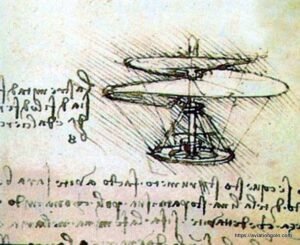
2. Early Flight Experiments
The earliest documented attempts at flight involve the Chinese use of kites around 400 BC. By the 15th century, Leonardo da Vinci’s sketches featured multiple flying machines, including the ‘ornithopter’, which was designed to mimic the flapping of bird wings.
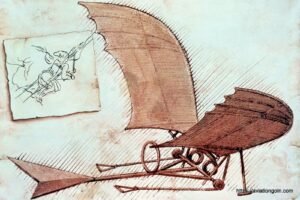
3. Lighter-than-air Flight: Balloons and Dirigibles
In 1783, the Montgolfier brothers in France launched the first hot air balloon, marking the first human flight. Following this, the 19th century saw the rise of dirigibles or airships, with the Zeppelin being the most renowned. These became popular for passenger transport and military reconnaissance.
4. Heavier-than-air Flight: Gliders to Powered Aircraft
The critical challenge was achieving flight with heavier-than-air craft. Sir George Cayley, in the early 1800s, designed the first modern glider and is often referred to as “the father of aviation.” Progressing from gliders, the end of the 19th century and the beginning of the 20th witnessed numerous inventors and pioneers like Otto Lilienthal and Samuel Langley making valiant attempts at powered flight.
However, it was the Wright brothers, Wilbur and Orville, who would change history. On December 17, 1903, in Kitty Hawk, North Carolina, they successfully flew the world’s first powered, controlled, and sustained flight. Their aircraft, the Wright Flyer, was a marvel of engineering and a testament to their perseverance.
5. World War I and the Evolution of Military Aviation
While aviation initially progressed slowly after the Wright brothers’ success, the advent of World War I acted as a catalyst. Aircraft became essential for reconnaissance, and this led to rapid advancements in aviation technology. Fighters and bombers came into existence, and by the end of the war, planes had become crucial components of military strategy.
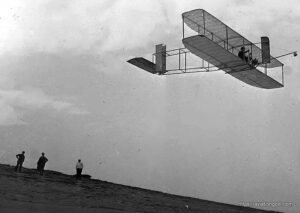
6. The Golden Age of Aviation
Post World War I, the 1920s and 30s were characterized by an explosion in both commercial and exploration flights. Charles Lindbergh’s first non-stop solo flight across the Atlantic in 1927 made him an international hero. Amelia Earhart became a symbol of ambition and adventure, especially for women.
Airlines like Pan American World Airways (Pan Am) began operations, and the first commercial routes were established. This era also saw the beginning of air mail and cargo services.
7. World War II: A Technological Leap
World War II transformed aviation. The need for superior air power led to innovations like jet engines and radar. The world saw the creation of iconic aircraft like the Supermarine Spitfire, P-51 Mustang, and the B-29 Superfortress. The conflict concluded with the dropping of atomic bombs by the B-29s on Hiroshima and Nagasaki, underscoring the devastating power of air warfare.
8. Jet Age and the Commercial Boom
Post-World War II, commercial aviation experienced an unprecedented boom. The development of jet engines led to faster, larger, and more efficient aircraft. Boeing’s 707 and the Douglas DC-8 marked the beginning of the jet age for commercial aviation in the late 1950s.
9. Modern Aviation
By the late 20th and early 21st centuries, air travel had become commonplace. The development of aircraft like the Boeing 747 (the original “Jumbo Jet”) and the supersonic Concorde revolutionized international travel. Today’s aviation world is characterized by a focus on sustainability, with electric planes and fuel efficiency being crucial areas of development.
10. Space: The Final Frontier
While the primary focus of aviation history revolves around our atmosphere, the achievements of space exploration are intrinsically tied to it. From Yuri Gagarin’s first orbit of Earth in 1961 to the numerous space shuttle missions by NASA, spaceflight is the next chapter in human aviation.
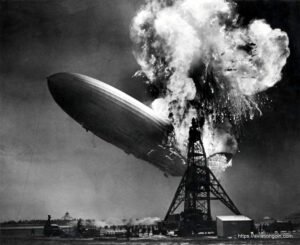
11. Advances in Aircraft Design
Aircraft design has evolved considerably since the Wright brothers’ rudimentary biplane. During the late 20th century, innovations such as “fly-by-wire” systems, which replaced manual flight controls with electronic interfaces, were introduced. The increased utilization of composite materials made planes lighter and more fuel-efficient.
The Airbus A380, introduced in 2007, stood out as the world’s largest passenger airliner, boasting two full-length passenger decks. Meanwhile, the Boeing 787 Dreamliner was praised for its fuel efficiency, relying heavily on composite materials for its construction.
12. Challenges and Controversies
As aviation grew, so did its challenges. Environmental concerns have been raised about the industry’s carbon footprint. The Concorde, while an engineering marvel, faced criticisms for its sonic booms and high fuel consumption, leading to its eventual retirement.
Safety has been paramount, with significant accidents prompting improvements in aircraft design, air traffic control, and pilot training. The disappearance of Malaysia Airlines Flight MH370 and the two crashes involving the Boeing 737 Max are recent examples that underscore the importance of constant vigilance in aviation safety.
13. The Unmanned Revolution
Drones, or Unmanned Aerial Vehicles (UAVs), have heralded a new era in aviation. Initially used for military purposes, drones have found their way into various civilian applications, including aerial photography, agriculture, and delivery services. Their popularity has also resulted in regulatory challenges and debates over privacy.
14. The Role of Aviation in a Globalized World
Air travel has been instrumental in promoting globalization. The ability to connect any two major cities within hours has transformed business, tourism, and even socio-cultural dynamics. Major global events, like the Olympics or the FIFA World Cup, heavily rely on air travel for their success.
However, the 2020-2021 COVID-19 pandemic posed unprecedented challenges to the industry, with international air travel grinding to a near halt. The pandemic also accelerated discussions on the importance of sustainable travel.
15. The Future of Aviation
The future of aviation is poised at the intersection of sustainability, technology, and evolving socio-economic needs. Concepts like electric aircraft, vertical take-off and landing vehicles (VTOLs), and even urban air mobility are at the forefront of aviation innovation.
Space tourism, a concept once restricted to science fiction, is gradually becoming a reality with companies like SpaceX, Blue Origin, and Virgin Galactic aiming to make space more accessible.
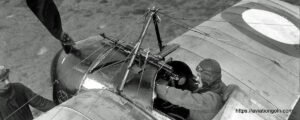
16. Regional Developments in Aviation
Different regions around the world have their unique narratives in the context of aviation history.
16.1 Europe:
Home to pioneers like the Wright Brothers and Louis Blériot, Europe saw rapid advancements in aviation technology during both World Wars. The post-war era saw the emergence of European giants like Airbus, which would eventually challenge Boeing’s dominance.
16.2 Asia:
Asian nations recognized the strategic and economic importance of aviation early on. Today, cities like Dubai and Singapore are major global hubs. Carriers like Emirates, Singapore Airlines, and Qatar Airways are lauded for their service and extensive networks.
16.3 Africa:
While aviation developed slower in Africa compared to other continents, airlines like Ethiopian Airlines emerged as significant players in international aviation. The continent continues to explore ways to leverage aviation for economic growth and regional connectivity.
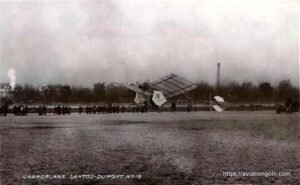
17. Notable Figures in Aviation
Over the years, numerous individuals have left indelible marks on aviation:
- Bessie Coleman: As the first African-American woman to hold a pilot license, Coleman broke racial and gender barriers in the early 20th century.
- Sir Frank Whittle: Often credited with inventing the turbojet engine, his innovations paved the way for the jet age.
- Howard Hughes: An entrepreneur and aviator, Hughes’ ventures significantly impacted commercial aviation, aircraft design, and even led to the creation of the Airbus consortium.
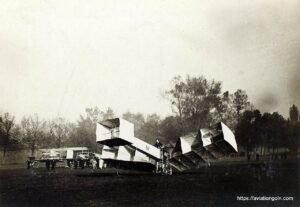
18. Current Technological Innovations
From improvements in propulsion to streamlined aircraft designs and AI-driven air traffic control, technology continues to reshape aviation:
18.1 Hybrid and Electric Propulsion:
Companies are experimenting with electric and hybrid propulsion systems to reduce the industry’s carbon footprint. These endeavors might radically transform short-haul flights in the future.
18.2 Sustainable Aviation Fuels (SAFs):
SAFs are emerging as viable alternatives to conventional jet fuels, derived from sustainable resources and offering a lower carbon footprint.
18.3 Supersonic Travel:
Though the Concorde was retired, there’s renewed interest in supersonic commercial travel. Companies like Boom Supersonic aim to reintroduce faster-than-sound travel but with better efficiency and economic viability.
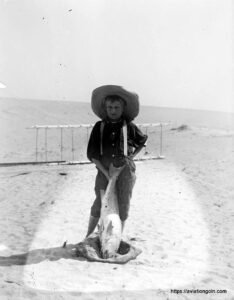
19. Socio-cultural Impact of Aviation
Aviation has transcended its functional role of transport, influencing global culture, lifestyle, and even cuisine. In-flight entertainment, airport architecture, and the experience of duty-free shopping are cultural phenomena in their own right.
20. Regulations and Governance
The International Civil Aviation Organization (ICAO), a UN specialized agency, was established in 1944 to manage the administration and governance of the Convention on International Civil Aviation (Chicago Convention). It plays a pivotal role in ensuring safe and organized growth in international civil aviation.
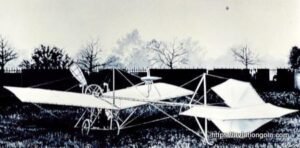
21. Evolution of Air Traffic Control
With increasing aircraft in the sky, coordinating their movements became paramount. The early 20th century saw rudimentary air traffic control (ATC) methods, mostly visual signals. However, the mid-century brought about radar technology, which revolutionized ATC. Today, satellite-based systems like the Automatic Dependent Surveillance-Broadcast (ADS-B) provide real-time aircraft tracking, vastly improving safety and efficiency.
22. Contributions to Science and Weather Prediction
Aviation has played a vital role in advancing meteorology. Aircraft often carry weather instruments that collect invaluable data. Hurricane Hunter planes, for instance, fly directly into storms, helping meteorologists understand and predict their paths and intensities.
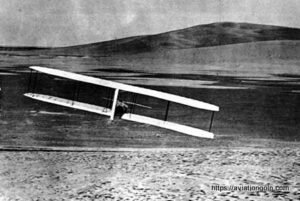
23. Impact on World Economies
The aviation sector has been a significant employment source and economic driver. Beyond direct airline and airport jobs, the ripple effect spans tourism, logistics, and related industries. Cities with major hubs, such as Atlanta or Dubai, have seen transformative economic growth due in large part to their aviation sectors.
24. Aviation in Pop Culture
Air travel and pilots have captured the imagination of many, finding their way into films, literature, and music. Movies like “Top Gun,” “Sully,” and “Catch Me If You Can” showcase various aspects of aviation, while books such as “The Aviator” and “Wind, Sand and Stars” delve deep into the allure of flying.
25. The Era of Ultra-Long-Haul Flights
The late 20th and early 21st centuries have seen the introduction of ultra-long-haul flights. Routes like Singapore to Newark or Doha to Auckland cover staggering distances non-stop, reshaping our understanding of world travel and connectivity.
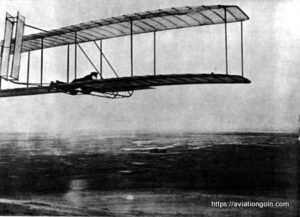
26. Airport Evolution
Airports have evolved from basic airstrips into sprawling, multi-functional entities. Today’s airports are architectural marvels, offering shopping, fine dining, and even luxury accommodations. Singapore’s Changi Airport, with its butterfly garden and waterfall, exemplifies this evolution.
27. Challenges Ahead: Climate Change and Sustainability
The aviation industry faces increasing pressure to combat climate change. Innovative solutions, from newer, fuel-efficient engines to operational measures like optimized flight paths, are being explored to reduce the environmental impact.

28. Medical and Humanitarian Role of Aviation
Beyond commercial roles, aircraft play crucial parts in medical emergencies and humanitarian missions. From the Royal Flying Doctor Service in Australia to airlifts in disaster-stricken regions, aviation proves its worth in life-saving missions regularly.
29. Personal Aviation and Future Urban Mobility
The future may see a rise in personal aviation devices, from jetpacks to personal drones. Concepts like “flying cars” or eVTOLs (Electric Vertical Takeoff and Landing vehicles) promise to redefine urban mobility in the coming decades.
30. Closing the Gender Gap in Aviation
Historically, aviation was a male-dominated field. However, efforts are ongoing to increase gender diversity, with more women taking on roles as pilots, engineers, and industry leaders.
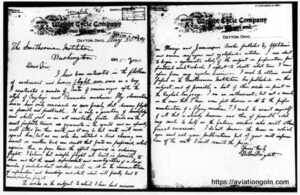
Conclusion
The tapestry of aviation is rich, woven with threads of human endeavor, technological marvels, global events, and individual dreams. As we stand on the precipice of new frontiers, from the depths of our oceans to the vastness of outer space, aviation will undoubtedly continue to play a defining role in shaping our shared human journey. Whether we’re looking back at the relics of our aviation past or forward to a horizon yet to be explored, one truth remains: the sky, vast and infinite, beckons us all.
